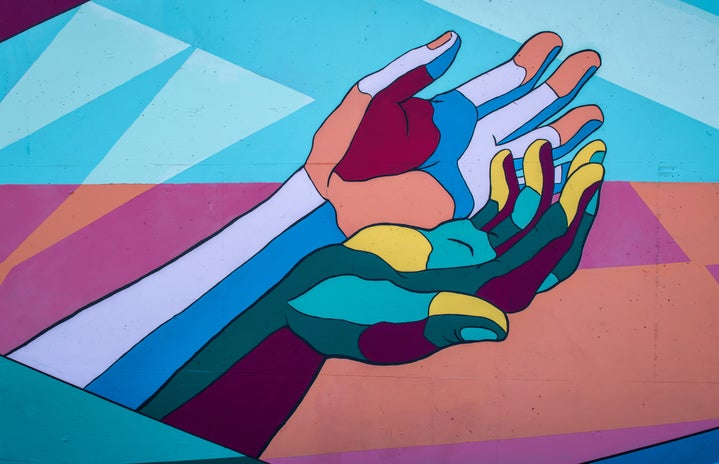A recent revisitation of some of my favourite Disney films provoked some speculation on characters I hadn’t given nearly as much thought to when I was younger: I found that Flynn Rider and Nick Wilde, the deuteragonists of Disney’s animated feature films Tangled (2010) and Zootopia (2016) respectively, have so much in common that I’m baffled it isn’t talked about more often. Obviously, I felt the need to amend the lack of discussion surrounding these dashing deuteragonists by dedicating an entire article to them. I’m hoping this will nudge more people towards recognition of the fact that Flynn Rider and Nick Wilde are mirror images of each other – or, as some would say – the same character in different fonts (the fonts being human and animal). Perhaps that doesn’t come as that much of a surprise to some considering that both films have one director – Byron Howard – in common. Having worked on Tangled six years prior, he cannot be faulted for being predisposed towards the desire to reprise a character as iconic as Flynn Ryder.
Flynn Rider’s character design was engendered by a process dubbed the “hot man meeting” by the directors of Tangled – Nathan Greno and Byron Howard. The objective of these meetings was to corral all of the female employees of the studio into one room and gauge their opinions on what exactly made a man good-looking. Physical features such as eye colour, hair colour, style, and physique, were all taken into consideration in order to create a character that would effectively appeal to the female audience. There exists video footage that allows us glimpses into the concept art inspired by various male celebrities, including Johnny Depp, Hugh Jackman, Brad Pitt, David Beckham, and Gene Kelly, all pasted on the walls of the room. The directors have shared that other inspiration was derived from personalities such as David Beckham and Clark Gable. This elaborate process ultimately led to the final design of Flynn Rider or – more accurately – Eugene Fitzherbert:
“…all the ladies of the studio came into the ‘Hot Man Meeting’, where we gathered pictures of their favourite handsome men—we collected pictures from the Internet and from books and from women’s wallets. They were very specific about what they liked and what they didn’t like.”
I remember scrolling aimlessly through YouTube on a sweltering hot day during the summer of 2020 and stumbling across a video entitled “Why It’s OK to be Attracted to Nick Wilde”. I immediately chalked the existence of such a video up to lockdown-induced delirium. However, I was pleasantly surprised when I actually watched the video to find that the YouTuber had made several compelling points. In it, she introduces the concept of anthropomorphism – the practice of attributing human characteristics to animals or objects. She also demonstrates, through the examples of Mr. Fox from Wes Anderson’s Fantastic Mr. Fox (2009) and Disney’s Robin Hood (1973), how slyness is one of the most fundamental character traits of any rendition of the animated fox. The classic eyebrow arch, the infuriating yet endearing ever-present smirk, the relaxed posture and the maddening self-confidence (and a penchant for crime, but I digress) are all hallmarks of the stereotypical portrayal of the anthropomorphised fox. Anyone who has watched Zootopia would agree that Nick Wilde embodies all of this and more.
Both Flynn and Nick’s character arcs are rooted in essentially the same trope: they were slighted by society and felt the irrepressible urge to reinvent and harden themselves against any other blows that might be dealt to them by the society responsible for their ostracization. Both characters carefully spin personas from the cloth of cunning charisma as they go on to dabble in crime – ranging from petty to serious. They then come across their respective jubilant female protagonists, and, in spending time with them, find themselves softening in the face of the girls’ infectious optimism. There is the customary conflict between the two main characters that is crucial to moving the plot forward, which is then followed by a fulfilling reconciliation between the two parties, thus forging a dynamic that is sure to be appreciated by the masses for years to come. The suave self-assuredness – although possibly duplicitous – that both characters seem to possess in droves has captivated audiences for years. The credit for this goes to the clever writing as well as the work done by the voice actors of the characters – Zachary Levi for Flynn Rider and Jason Bateman for Nick Wilde – in bringing that writing to life.
At this point, we have already established that there is a significant similarity between the two characters. But what about the films that have given us these paragons of charisma? Both narratives hinge on the unlikely alliances formed between the protagonists and the deuteragonists – namely, Rapunzel and Flynn in Tangled and Judy Hopps and Nick in Zootopia. Rapunzel and Judy, while also resembling one another in terms of personality and fundamental character traits, differ in the slightest but somehow most significant of ways: Tangled illuminates Rapunzel as she follows her dream, whereas Zootopia is centred around Judy following her ambition. One might argue that these words are synonymous, but the use of the word “dream” in Tangled is more in alignment with fantasy than ambition. I think an acknowledgement of this distinction is necessary because it is this distinction that determines the involvement of our deuteragonists in the storylines: Flynn is responsible for helping Rapunzel actualise her dream, whereas Nick is caught in the whirlwind of Judy’s ambition and works alongside her to fulfil it. The films also fork from each other in their overarching themes: Zootopia weaves a veiled commentary on bias and preconceived notions through the allegory of an assortment of animals coexisting in one space, whereas Tangled works within the parameters of the tried and true love story or fairytale.
However similar or dissimilar they are, through these movies, Disney has given us two of its most memorable characters. Although so alike in their incorrigible flirtiness, their slyness, their generally debonair demeanours, as well as their capacity for turning over a new leaf, both characters have their own charm, which lends the films individuality. The undeniable charisma and razor-sharp wit juxtaposed by the softness that is revealed to us incrementally as the films progress are all a testament to how fleshed-out these characters are and – resultantly – how much colour they bring to the canvases of their respective films.


